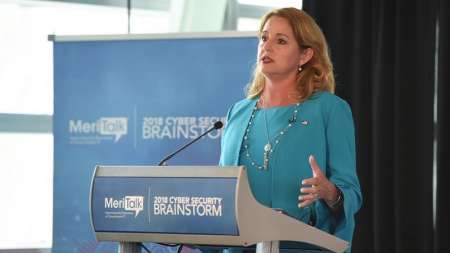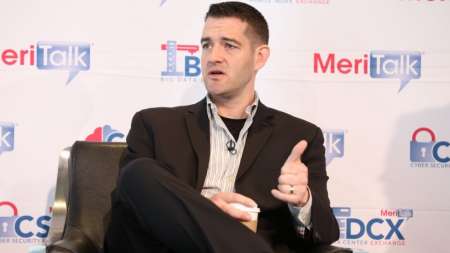The Department of Homeland Security’s (DHS) Science and Technology Directorate (S&T) awarded $3.5 million in research and development funding to improve detection capabilities of X-ray technology used for checked baggage systems at U.S. airports. […]
The Federal Bureau of Investigation (FBI) released a new webpage focusing on combating foreign influence campaigns. […]
The Census Bureau found nearly 3,100 security weaknesses after testing 33 of its 44 systems, leaving a large amount of work to be done before the 2020 Census, according to a Government Accountability Office (GAO) report on the agency’s IT systems. […]
The National Institute of Standards and Technology (NIST) is updating two of its major publications regarding mobile device security, and NIST’s National Cybersecurity Center of Excellence (NCCoE) is expanding into uncharted territory. […]
The Defense Information Systems Agency (DISA) Operations Center (OC) posted a request for information (RFI) yesterday seeking industry assistance with the development and planning of MilCloud2 Rapid Cloud Migration. Specifically, DISA is interested in conducting market research to understand what capabilities exist in the private sector related to automated cloud migration techniques. […]
The U.S. Department of Agriculture (USDA) today launched a new webpage highlighting the importance of rural e-connectivity, as well as ways USDA is helping to deploy high-speed broadband infrastructure in rural America. […]
The State Department’s Office of Inspector General (OIG) has issued a new report that flags security control issues for a data analytics test network and internal case management system operated by the Bureau of Consular Affairs’ Office of Fraud Prevention Programs (OFPP), and reported that OFPP is taking steps to resolve the problem. […]
Cybersecurity officials must balance strategic thinking on issues such as training and collaboration amid the tactical challenges of finding enough cyber professionals and funding, said Federal government executives during a panel at the Digital Government Institute’s 930Gov event on August 28. […]
News out of the Australian government this month provided a glaring reminder that the weakest link in the cybersecurity chain isn’t software vulnerabilities or patching cycles, it’s the person behind the keyboard. […]
Email authentication technologies provider Valimail said today it will provide its email anti-fraud service free of charge to state boards of election, voting system vendors, and major-party U.S. election campaigns. […]
The Senate late Tuesday approved by voice vote the nomination of Karen Evans as Assistant Secretary of Energy for Cybersecurity, Energy Security, and Emergency Response (CESER)–a newly created position at the agency. […]
John Noble, former director of the National Cyber Security Centre in the United Kingdom, took a pessimistic view on the future of cybersecurity during a BeyondTrust webinar on Wednesday. […]
The ransomware attack on the city of Atlanta in March of this year, which brought down numerous online city services for several days, should be seen as a warning for similar attacks on municipalities in the future with even more drastic impacts as city services become more reliant on IT systems, a senior Department of Homeland Security official said Tuesday. […]
Research firm Gartner said Tuesday that Chinese telecom equipment maker Huawei has surpassed Apple to become the second-largest provider of smartphones globally, edging out Apple in market share for the first time ever. […]
The Naval Research Laboratory issued a request for proposal on Tuesday for “Advanced Secure Information Processing,” which will provide scientific and engineering support for research and development of IT platforms, data management techniques, algorithms, software development, and experiment and field trials. […]
Genevieve Morris on Aug. 24 resigned as chief health information officer (CHIO) of the Department of Veterans Affairs’ Office of Electronic Health Record Modernization (OEHRM). […]
Mitre, a non-profit organization that manages federally funded research and development centers supporting several Federal agencies, has tapped Gary Gagnon to be both VP of cyber strategy and chief security officer. […]
Matthew Travis, deputy undersecretary of the Department of Homeland Security’s National Programs and Protection Directorate (NPPD), said today that DHS’s recently-established National Risk Management Center (NRMC) represents the agency’s plan to play “the long game” in defending U.S. critical infrastructure sectors from attacks. […]
The National Science Foundation (NSF) is betting big on quantum computing, to the tune of up to $25 million. […]
Federal CIO Suzette Kent said today that the Office of Management and Budget (OMB) is working with the Department of Homeland Security (DHS) to update metrics for Federal Information Security Modernization Act (FISMA) reporting, and said that agencies are seeing progress in those metrics, which are being tracked in a newly added category in the Federal IT Acquisition Reform Act (FITARA) scorecard. […]
The Army Futures Command (AFC) is ready to start working on modernizing the U.S. Army. As MeriTalk reported last month, the new AFC is headquartered in Austin. John Murray, who will lead the new command, was promoted to four-star general last Friday at a ceremony in Austin, following Senate confirmation of the promotion early last week. […]
Members of the House Committee on Energy and Commerce called on the Department of Homeland Security (DHS) to conduct biennial reviews and provide dedicated funding to the Common Vulnerabilities and Exposures (CVE) program after finding erratic contracts and little planning documentation. The request was made via a letter to DHS Sec. Kirstjen Nielsen on Monday. […]
Defense Secretary James Mattis in May urged President Trump to create a “whole of country” national strategy to advance U.S. development of artificial intelligence technologies, shortly after the White House’s announcement on May 10 of a new AI advisory committee–the Select Committee on Artificial Intelligence–to advise the White House on research and development efforts across government and industry. […]
The Department of Homeland Security (DHS), the Federal Bureau of Investigation (FBI), Facebook, and Microsoft hosted a joint briefing on Friday, Aug. 24, for the National Association of Secretaries of State (NASS) and the National Association of State Election Directors (NASED) regarding “actions being taken to combat malicious interference operations.” […]
As the Pentagon rushes headlong into putting artificial intelligence into more of its operations, analyses, and weapons, it has said it doesn’t want to ignore caution flags about putting too much faith in the power of machines. The Electronic Frontier Foundation (EFF) wants to help with that, posting an array of those flags in a white paper that offers guidance to military use of AI and includes of list of its shortcomings and where it can go wrong. […]
The National Association of State Chief Information Officers (NASCIO) previewed the results of its biannual state CISO survey during a webinar on Tuesday, revealing the continued growth of cybersecurity staff among the states, and continuing resource challenges. […]
The National Institute of Standards and Technology’s (NIST) National Cybersecurity Center of Excellence (NCCoE) is seeking comments on a draft practice guide that explores how multifactor authentication can help reduce fraudulent online purchases. […]
On the heels of Kelly Olson’s promotion to head the General Services Administration’s Technology and Transformation Services (TTS) organization (LINK to yesterday’s story), the agency is setting into motion a series of leadership changes impacting its FedRAMP operation, among others. […]
The former chief security officer at Facebook urged in a column published today on the “Lawfare” blog that the U.S. consider creating an independent, “defense-only” cybersecurity agency to deal with defense of election systems and processes that may come under attack by adversaries. […]
Services provider KBR was awarded a $71 million task order from the Defense Health Agency (DHA). […]



























